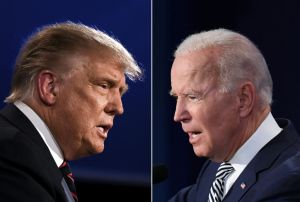Beto O’Rourke is about to launch a presidential campaign off the back of a failed Senate bid. He’s not the first to do so – Abraham Lincoln famously followed exactly that path to the White House. But nobody else is Lincoln, and Beto is hardly anyone at all: as a contender for the 2020 Democratic nomination, he’s the ‘not’ candidate. He’s not the most electable. He’s not the most left-wing. He’s not a woman or a minority. He’s not the most wonkish candidate. He’s not the most loyal to the party – that’s supposedly part of his appeal, the notion that he’ll pick up Republican votes. But obviously enough, he’s not going to be the most Republican candidate on the ballot in November 2020.
At 46, O’Rourke is not even the youngest Democratic hopeful: he’s beaten by Julian Castro (44), Andrew Yang (44), Tulsi Gabbard (37), and Pete Buttigieg (37). But he’s not particularly experienced either, of course, after just three terms as a congressman and another six years before that as an El Paso city councilman. O’Rourke’s advantage lies mostly in the fact that he’s the most photogenic male on the Democratic side. That and a bit of self-delusion is all it takes for some voters and many pundits to convince themselves that he’s the next Bill Clinton, the center-left’s Goldilocks: left-wing but not too left-wing, appealing beyond the blue base, and a youthful star on the rise.
But Clinton had experience and, more importantly, proven electability. Beto did well in Texas, for a Democrat; he also failed to beat a polarizing Republican with negative charisma in an exceptionally good midterm year for Democrats. O’Rourke is not an obvious choice to beat Trump in a year when Republican states will behave all the more Republican. He only lost to Cruz by two-and-a-half points, but Texas won’t be any more Democratic in a presidential year. O’Rourke’s appeal outside his home state is even more dubious – is a defeated Texas Democrat what Michigan or Pennsylvania voters want? It’s hard to see him as their first choice.
Good looks are worth six to eight points, to judge by O’Rourke’s support in national Democratic polls so far. He fares far worse in a recent Emerson poll of Michigan Democrats, however, which placed him near the bottom of the pack at two percent support. In the most recent Des Moines Register/CNN poll of Iowa Democrats, O’Rourke pulled five percent, putting him in fifth place behind Biden, Sanders, Warren, and Harris. Bet against Beto breaking through.
His path to the White House, if he has one at all, leads through the graveyard: if Beto does well enough to merit a place on the ticket as running mate to almost-octogenarians Joe Biden (who turns 77 this year) or Bernie Sanders (who turns 78), the actuarial table might just put him in the Oval Office, or clear the way for him to inherit the nomination in 2024 – assuming, of course, a Biden-Beto or Bernie-Beto ticket can beat Trump, or even pass muster with Democrats. If O’Rourke is really running for vice president, he has to wonder whether his party would really accept a ticket of two white males, after all the self-congratulation of the Barack Obama and Hillary Clinton nominations. A VP slot for O’Rourke might depend on Kamala Harris or Elizabeth Warren winning the top spot – but would they need or want O’Rourke? Maybe instead of being the next Bill Clinton, he’ll be the next Al Gore. More likely, he’s the next John Edwards: good-looking, Southern, and an also-ran.
Democrats are at a point where they have to decide on the post-Clinton character of their party. This year is the first wide-open nominating contest for the Democrats since 2004, and the only other one since 1992 in which a Clinton or Clinton VP is not a candidate. Obama beat Hillary but then governed like a Clinton anyway, with Hillary as his first Secretary of State and his successor as the Democratic nominee in 2016. The party has not had to seriously re-examine its formula in nearly thirty years. Part of the O’Rourke hype lies in the fact that he lets elite liberals, especially those in the adoring media, punt on the hard questions. But Biden lets them do that, too, and so to one degree or another does almost every Democratic hopeful this cycle who isn’t Bernie Sanders or Tulsi Gabbard. (There’s a good case to be made that Warren and Yang are post-Clintonite as well.) Obama ran on hope and change but delivered neither – which is why Hillary Clinton inherited his party and Donald Trump inherited his office. Just maybe the Democrats can get away with a simply not-Trump candidate next year, though I doubt it. But even if so, that’s postponing a reckoning with the party’s own Clinton-Obama legacy of failure, from healthcare to foreign policy to the disintegration of the middle class. Beto O’Rourke doesn’t have the answers to any of those problems, but that’s one of things his fans like about him: he puts a pretty face on a dying idea.


















